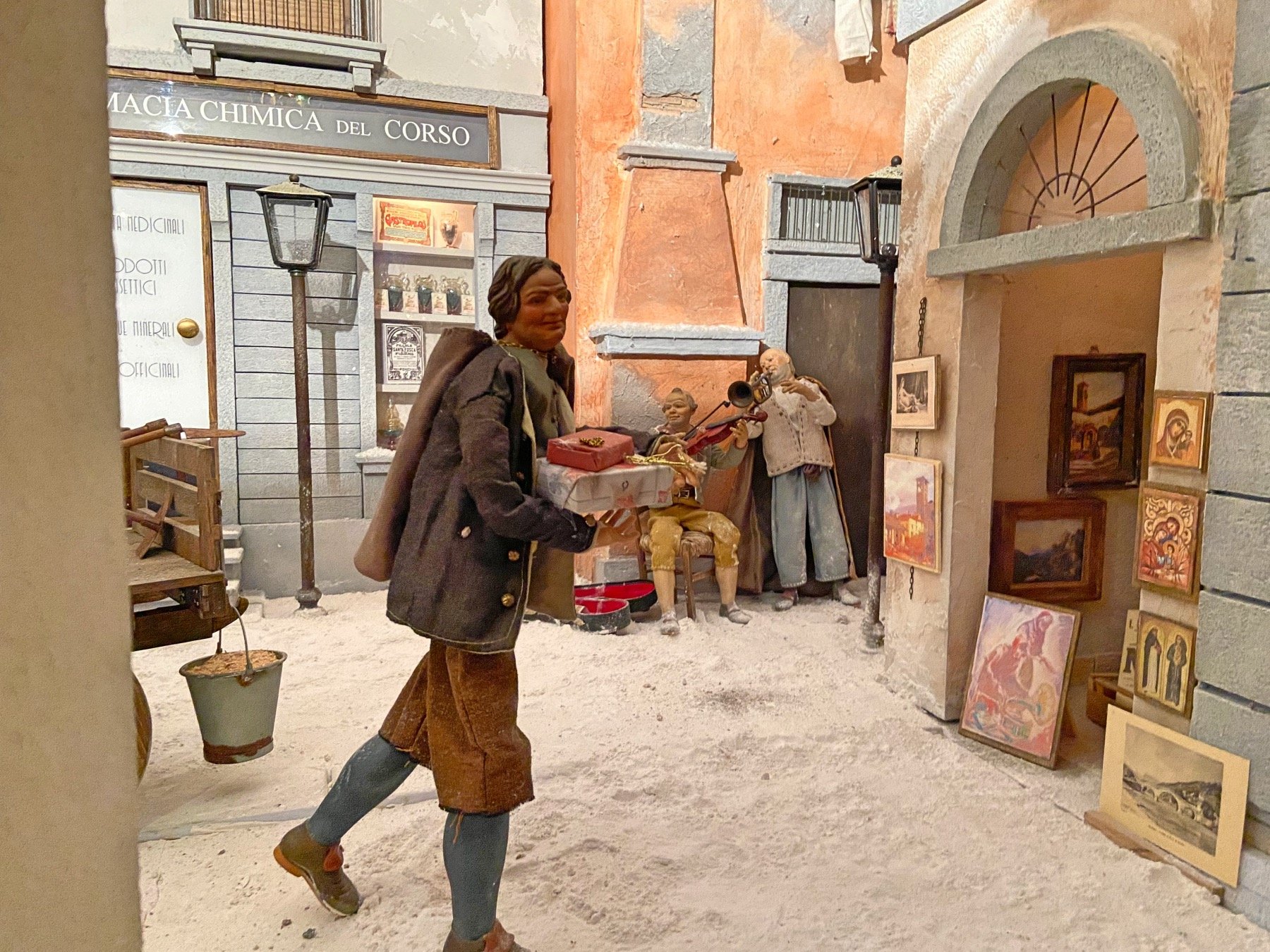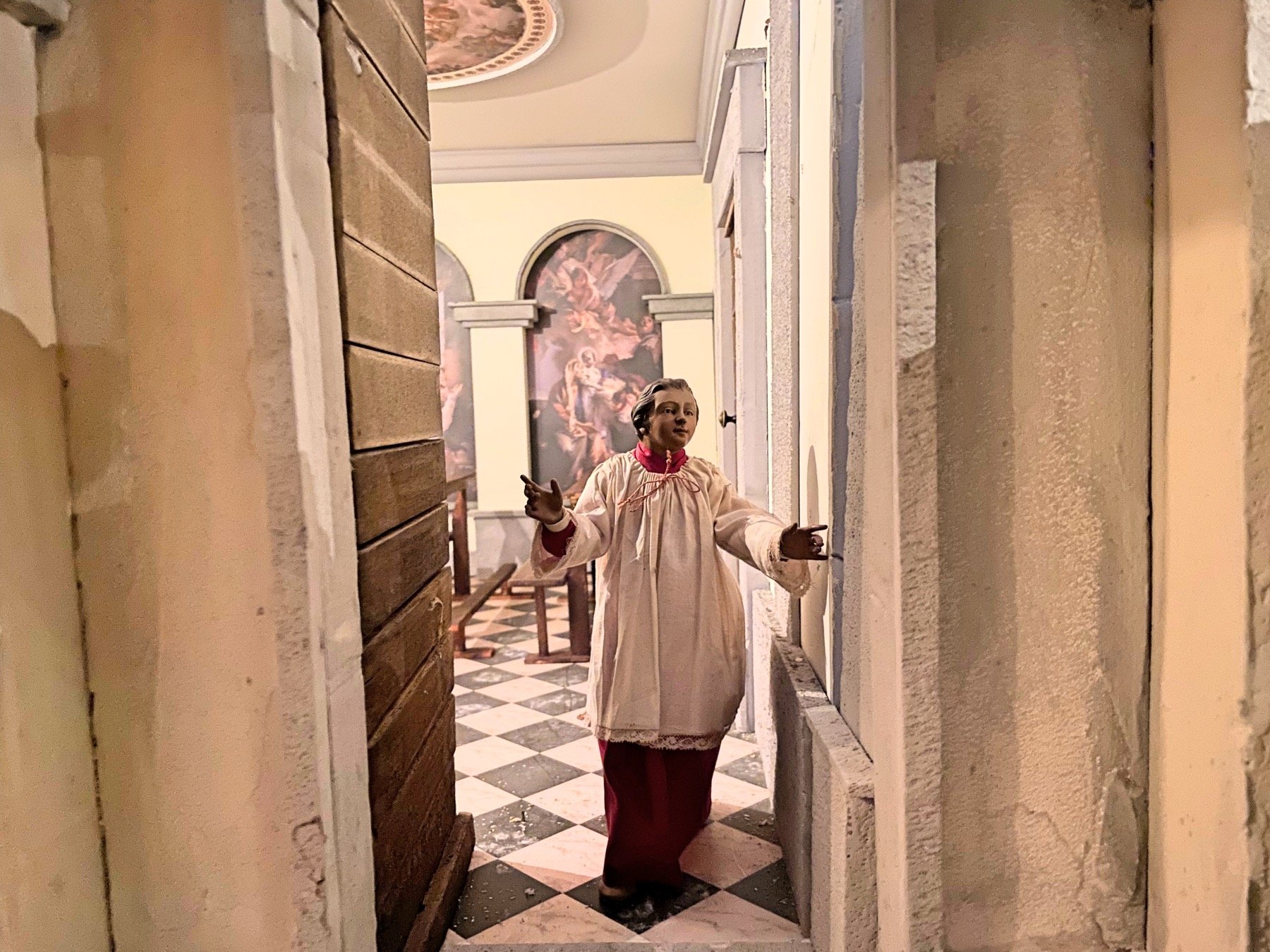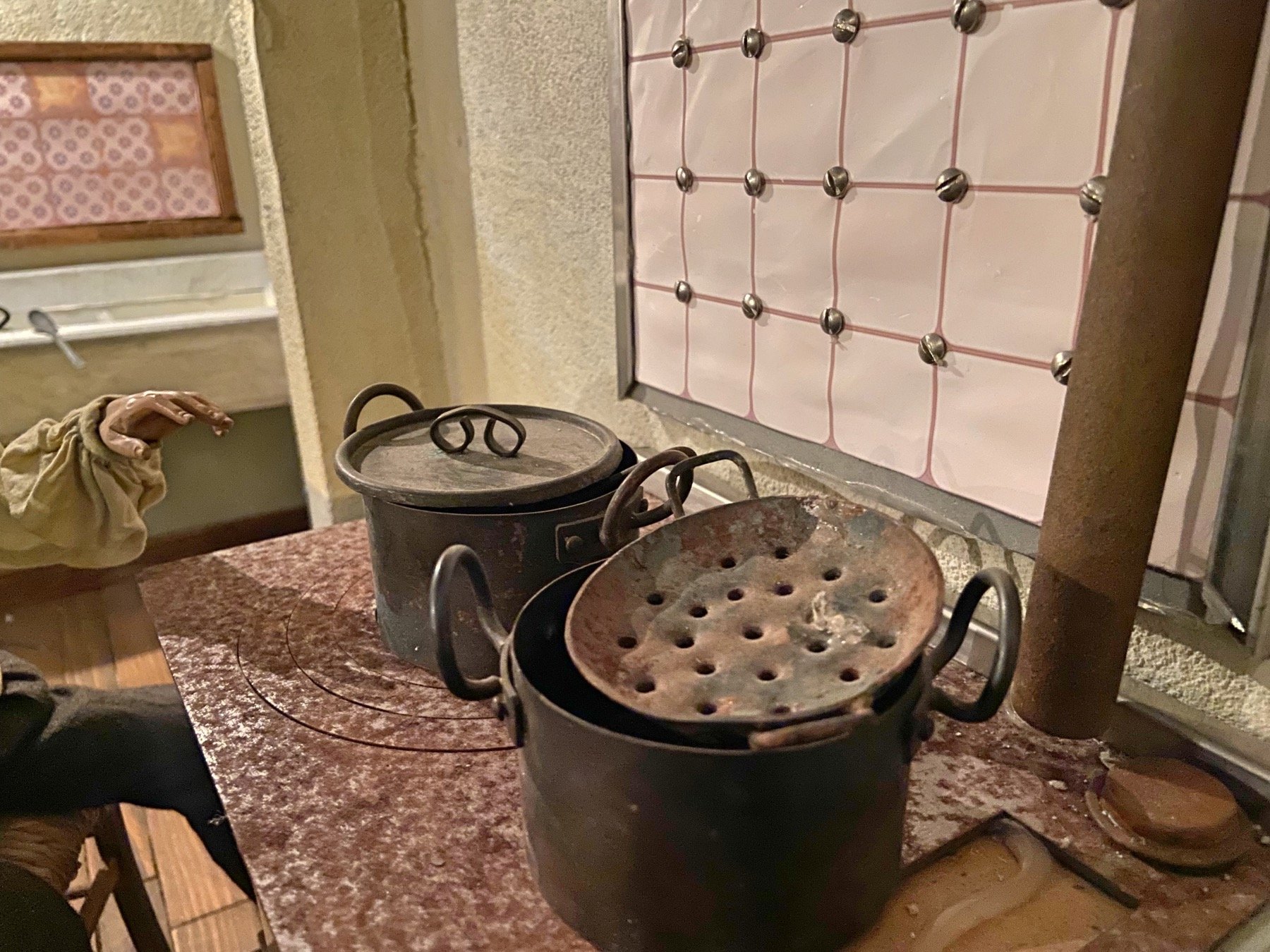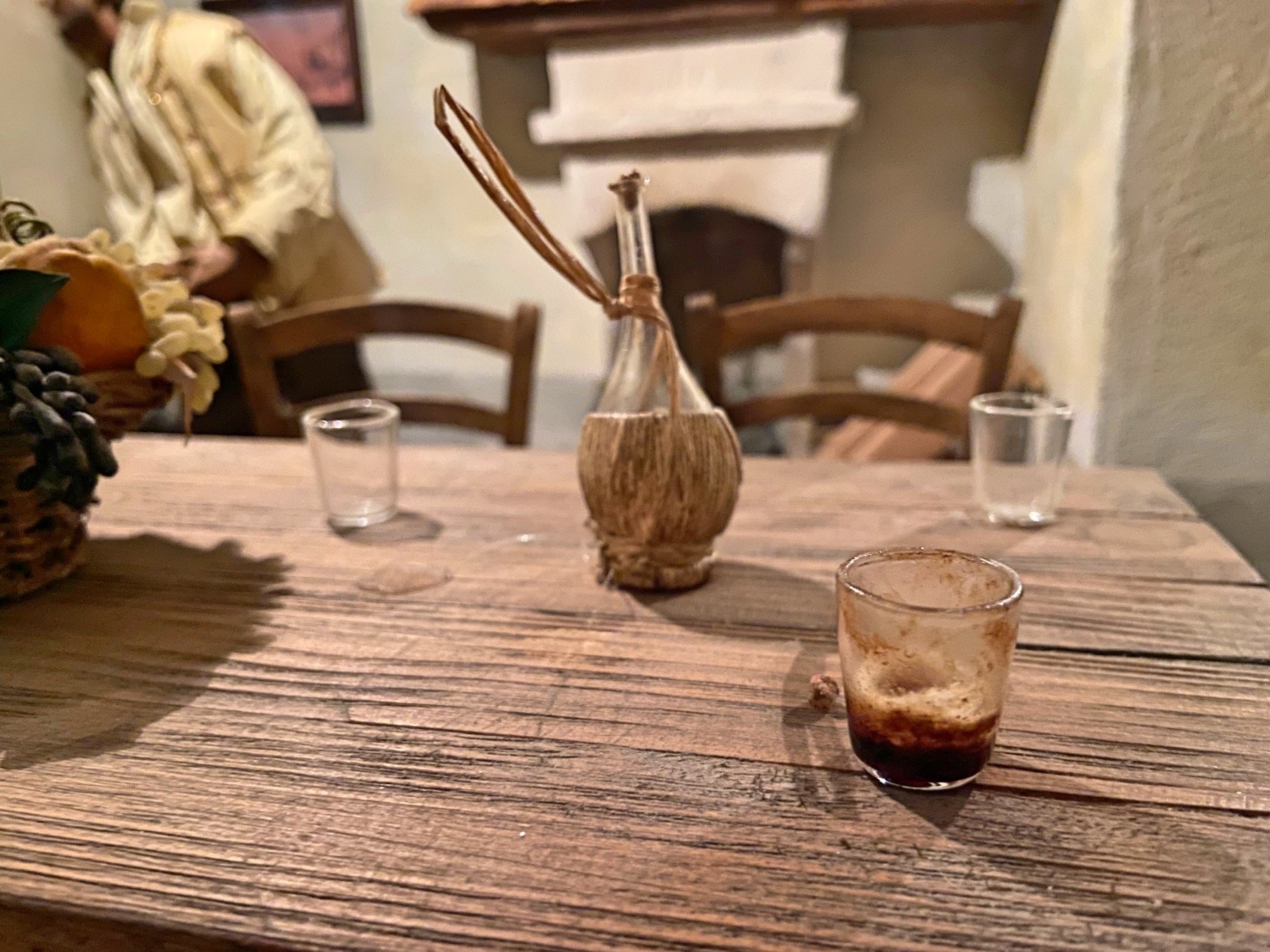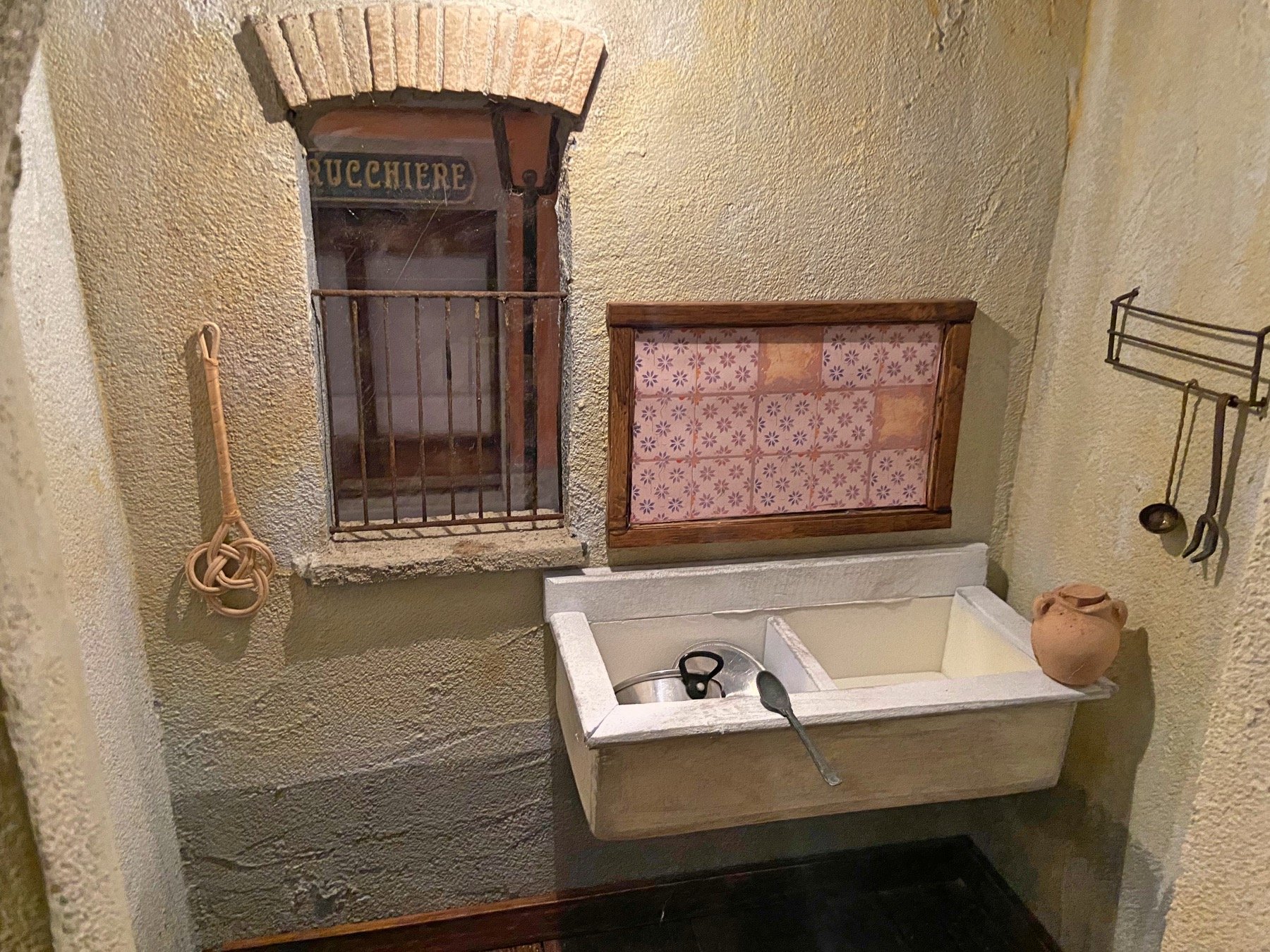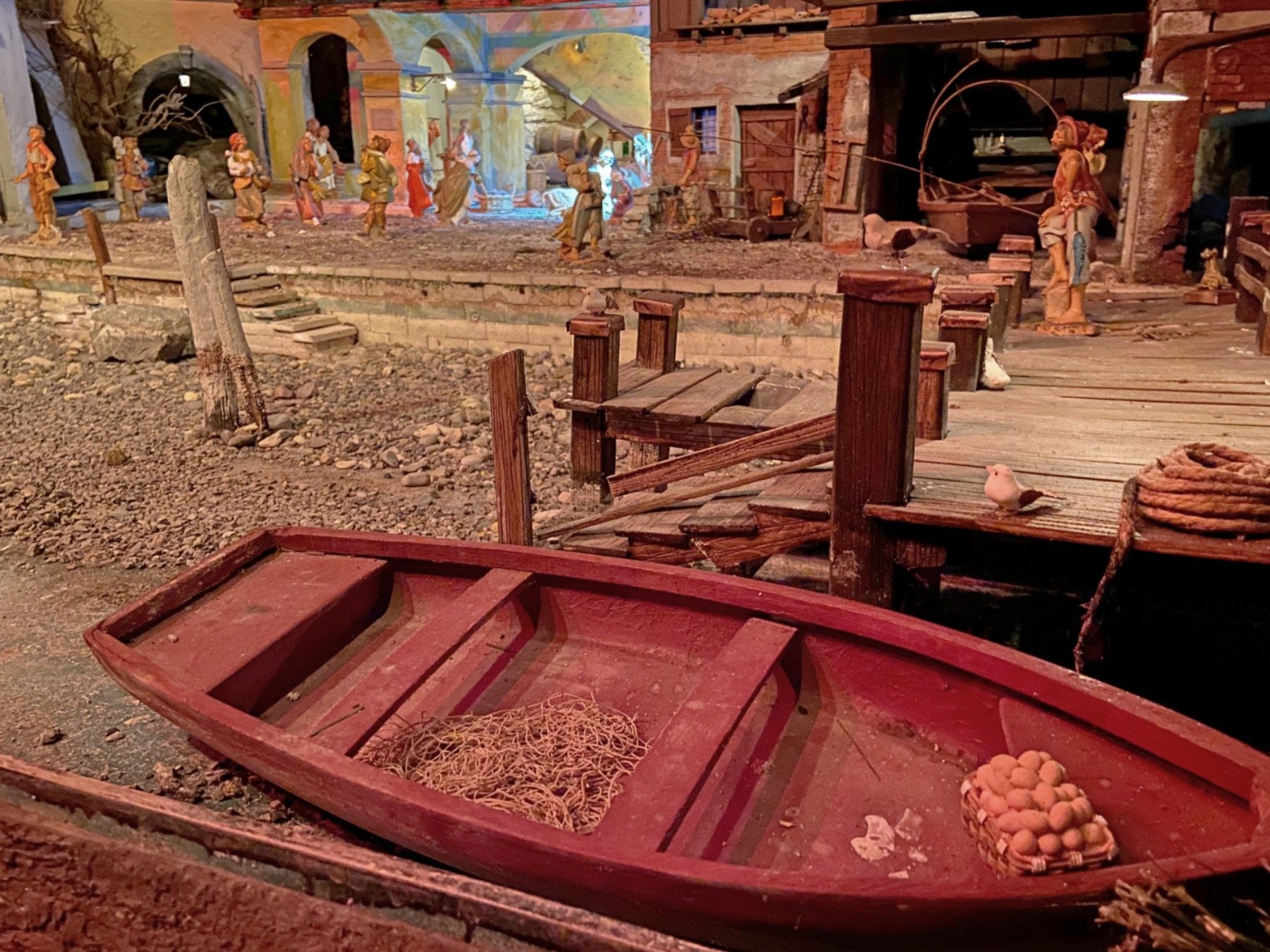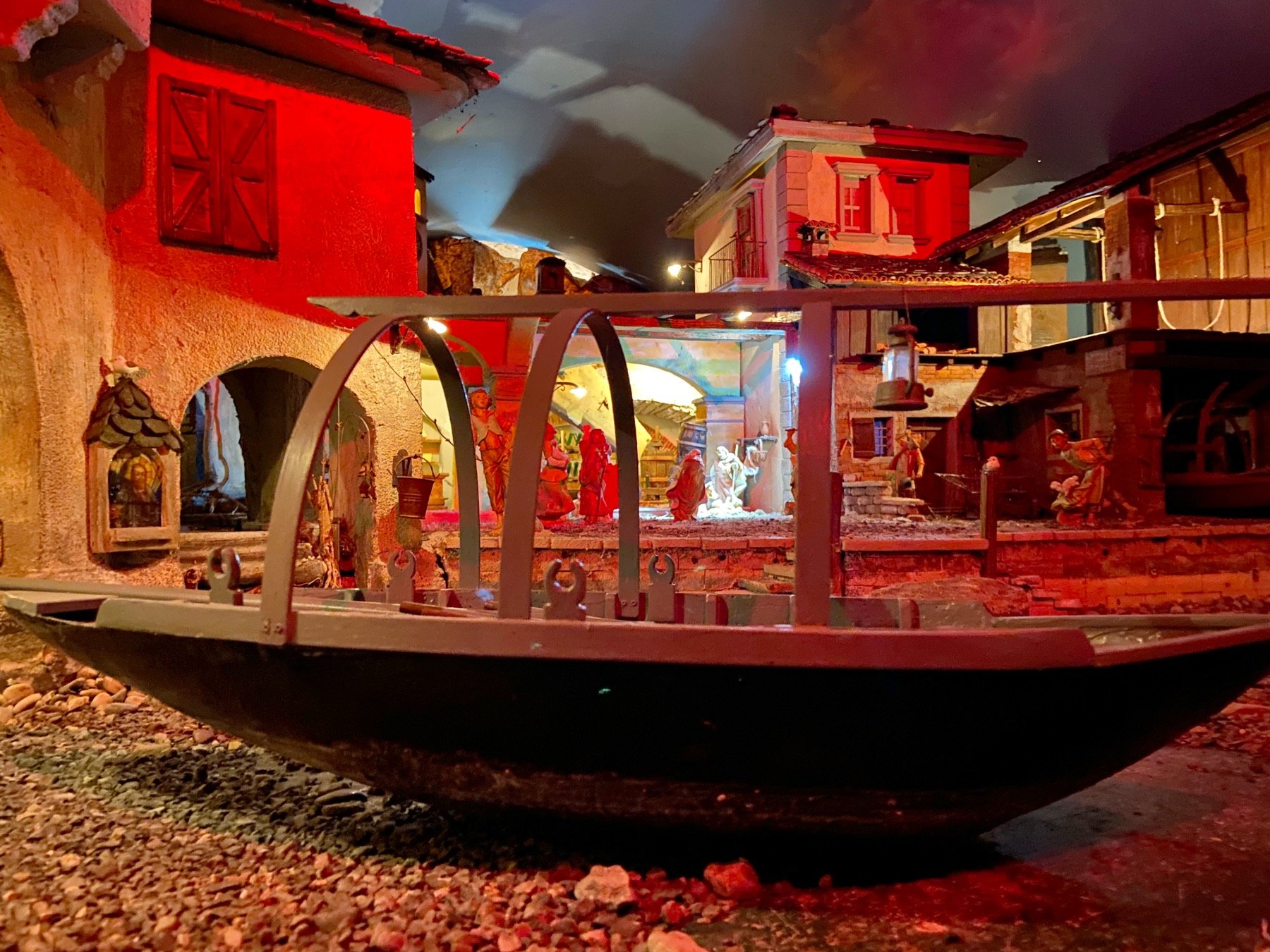The House of Nativity Scenes in Bonzanigo: An Impressively Faithful Portrait of Lake Como Life and Houses in the Early 20th-century
© Lakeside
If you've read our article about the impressive works of Miniature Zanotta you know we have a thing for all scale reproductions: being able to get close to a miniature and get lost in its myriad of incredible details is such a gratifying artistic and human experience, isn’t it? When it comes to reproductions of buildings, then, even more: observing the grain of the wood, the perfect juxtaposition of the roof tiles, the "tufts of parietaria attached to the walls" (to quote Italian singer-songwriter and poet Guccini), the rooms with their daily objects… it's like seeing our lives from above, from a bird's eye view. Everything is smaller to make us stop and grasp a deeper meaning, perhaps.
Whoever makes miniatures puts all the dedication of the world into it. Being an artist indeed means mastering the craft of patience.
© Lakeside
If you also love this kind of tiny poetic things, you absolutely cannot miss La Casa dei Presepi (literally “house of nativity scenes”) in Mezzegra, Tremezzina.
© Lakeside
Right at the entrance to the old medieval district of Bonzanigo, the stretch of road where the Greenway trail connects the parish church of S. Abbondio to the 18th century Brentano Palace, you'll notice an old barn: that's La Casa dei Presepi, a gallery with a permanent exhibition of dioramas and nativity scenes made by talented local artists.
© Lakeside
The museum is open year round and the entrance is free of charge (they work with donations); a gallery of suggestive stone vaults and niches will guide you in a charming atmosphere to discover these awesome creations.
© Lakeside
The works combine the patient historical research with faithful miniaturized reproductions, alternating scenographies in typical Palestine style with those of the local landscape.
Here are the 6 most interesting stories and cultural treats you’ll encounter by visiting this amazing tiny museum. Be ready to take a walk back in time to the early 1900s!
#1 The story of Linda and “Legnett”: an unexpected, secular “nativity scene” with the lives of the poorest
At the entrance to the museum you’ll find a panel which tells the story of Linda, a humble woman who gave birth to a baby girl right in the stable where the nativity scenes exhibition is set up today. It’s just a small beacon cast on the life of the poorest from the past; a tiny, moving story of human compassion and sense of community and help the needy.
This is the story (based on the memoirs of Ms Antonia Piazzoli), which we have summarized and translated for you:
“It wasn't Christmas, she wasn't the Virgin Mary, he wasn't St. Joseph, even if the stable was real like the one in Bethlehem, with the manger, the animals and the hay. But when a little girl was born in that stable in Largo Valle, Christmas really exploded […].
The rumor went around the village and there was immediately a rush of people to help; they brought gifts, necessary things, because in that stable there was nothing that could be used by a mother and a newborn. Her name was Linda and she came from Lenno, Campo district. She was a petite woman [...] they called her "Linda the drunkard", and she was homeless and jobless. She slept wherever she could. That stable was one of her refuges […]. She had a companion, a tall, thin man. No one remembers his real name: they called him “Legnett” (literally "the stick"). He was a foreigner who arrived at the lake as a gondola unloader.
[…] It wasn't Christmas, she wasn’t the Virgin Mary, he wasn’t S. Jospeh, but Baby Jesus was really in that stable….”
© Lakeside
#2 Jobs and activities of the past
The years in which these nativity scenes are set are presumably the first decades of the 20th century.
© Lakeside
You’ll see many professions of that time represented, certainly including the fisherman and - our favorite - the man who turns on the lights in the street lamps in the evening. Is there anything more poetic than bringing light into the darkness?
© Lakeside
In the representation of the lakeside nativity scene you can also see a woman washing clothes by the lake.
© Lakeside
Today it may seem quite incredible to us, but we’ve to remember that until the mid-twentieth century, laundry was done in a completely different way, most often with soap made at home from animal fat boiled together with caustic soda! Kneeling on their wooden "boxes" by the pebbled beaches, women washed and rinsed for hours.
© Lakeside
#3 The old hamlets: a real blast from the past
© Lakeside
The scenography of the small villages at the museum is just delightful (it reminded us so much of the spectacular, astonishing set of Guillermo del Toro's Pinocchio, these days on Netflix).
© Lakeside
In one of those you will also see the elegant parish church of Mezzegra, together with its old social cooperative and the elementary school. And then olive trees everywhere; after all, we are in Tremezzina, the land of sun and oil!
© Lakeside
The houses you’ll see are mainly those of the humble people, with roofs in old tiles, stables, barns where people used to store dried grass, alleys with stone steps, driveways, underpasses, houses often in ruins, animals running all around.
Sociality among families in the village took place at the fountains, the washhouses and the ovens.
#4 The miniatures of houses and their inviting interiors
© Lakeside
Observing the nativity scenes in this little lovely museum is also a good opportunity to refresh our memory on how the rural houses of Lake Como (and surroundings) were made in the early twentieth century.
© Lakeside
Very often these houses stood above the stables and chicken coops, from which they got a good amount of natural heat.
© Lakeside
Courtyard houses, with galleries with vertical masonry structures and wooden parapets, were pretty common; here the bathroom was usually built on the balcony, in an external room.
There were also houses made of stone and mortar, built around a heating system called "fire house" or "smoke chamber": the hearth was made up of four stones in the center of the room, with high-backed benches on the sides. Above the hearth was the chain, while the smoke stayed in the room and came out the door and the window.
Another typology of house represented in these little artworks is also the tall, multi-family one. Here the upper floors could be reached via external wooden stairs; porches and loggias distinguished the facades and were specifically designed to better protect the interiors of the house.
Stone (serizzo, ghiandone) was generally the most used material for all the structural elements of the house. Wood from local forests was mostly used in the attics.
© Lakeside
Above the wooden frames, the roofs were covered with stone slabs called “piode" (not to be confused with the precious Valmalenco slabs, which are dark greenish!).
© Lakeside
We also noticed in these nativity scenes the faithful reproduction of the houses made with the famous blokbau method, i.e. with horizontally overlapping wooden planks, typical of the mountains.
© Lakeside
On some facades there were some little openings; according to some, they are no just decorative, they were made to let the souls of those who die fly away.
Finally, you’ll notice the most common decorative element of Italian houses (not just typical of Lake Como): the little votive chapels dedicated to local saints.
© Lakeside
Internally, the fireplace was the hub of pretty much all houses. The fire was fed with chestnut wood due to its ability of burning slowly producing many embers, thus ensuring constant heat with no flame.
Adorable is the representation of the hardwood floor with long planks, which were generally in larch or pine, both strongly resistant wood.
© Lakeside
In the past it was a common practice to lay the wood on a sand substrate without stopping the boards: as a result, the pressure of the footsteps over the beads caused them to move, resulting in a (pretty fascinating) creak.
#5 Everyday objects, and the enviable quietness of that life
© Lakeside
In these little dioramas at La Casa dei Presepi you’ll notice a myriad of tiny objects from the daily life of the past: brooms and hand-stuffed baskets, oil lamps, the famous “gerla” (pack basket) for carrying wood, copper pots, terracotta vases, the heavy iron that worked with coal, the spinning wheel for wool.
© Lakeside
Don’t know about you, but we feel a kind of subtle melancholy looking at those quiet, humble interiors made of few, (truly) useful things.
Interestingly, there’s a Finnish word to describe this pretty odd nostalgia - it’s “kaukokaipuu”. Federico Garcia Lorca talks about the "fatal feeling of being born late" in his poem La Lluvia; also Woody Allen's film “Midnight in Paris” is all about this nostalgia for bygone eras.
The roaring fireplace, the copper pots on the stove, a glass of wine on the solid wood table, a nativity scene made up of a few figurines: everything conveys harmony in such an interior.
“Happy is the one who says he is happy to live simply”, we read somewhere.
#6 The boats at the center of everything
© Lakeside
If you know a little about the culture of our lake you’ll have for sure noticed them: in the beautiful nativity scene dedicated to Lake Como, there are also the Lucie (“batell”, the historic rowing boats of our lake) and the quatrass, a small rowing boat used in the northern stretch of Lake Como, in shallow waters.
In the 1930s indeed all the main goods arrived by lake: wood, coal, stones, flour, cement, salt, pasta. The boats were at the center of the life of the people living in our region.
© Lakeside
Now that you know the kaleidoscope of emotions you can experience “jumping” into these tiny, magnificent worlds, you just have to stop by this precious museum. The perfect escapism to relax with during the last days of the year!
Article by Laura Zanotta
All the cultural articles of Comolakesideblog are independent and never promotional; they are meant to show the beauty, culture and historic roots of Lake Como to the world.
Looking for a property in one of the locations mentioned in this article?








